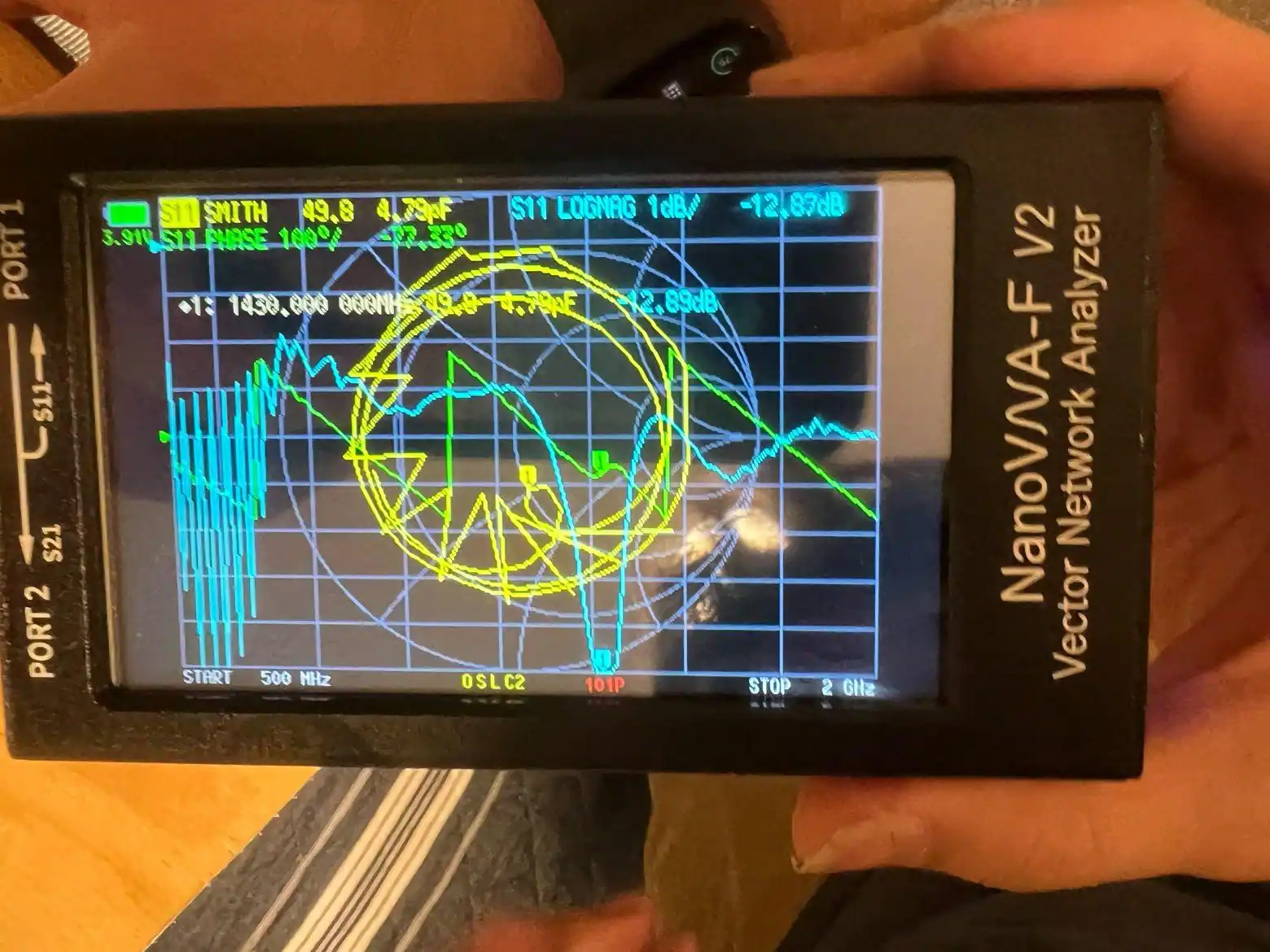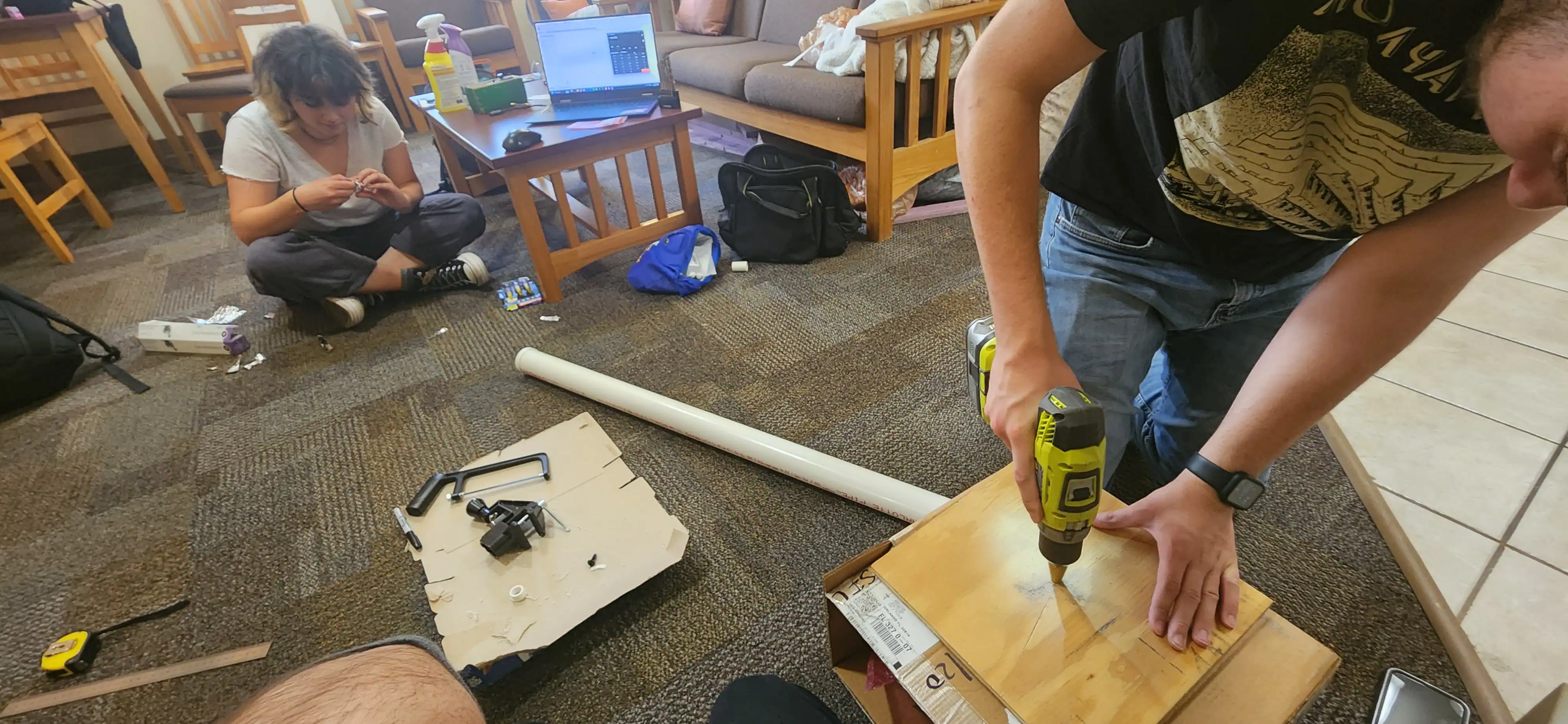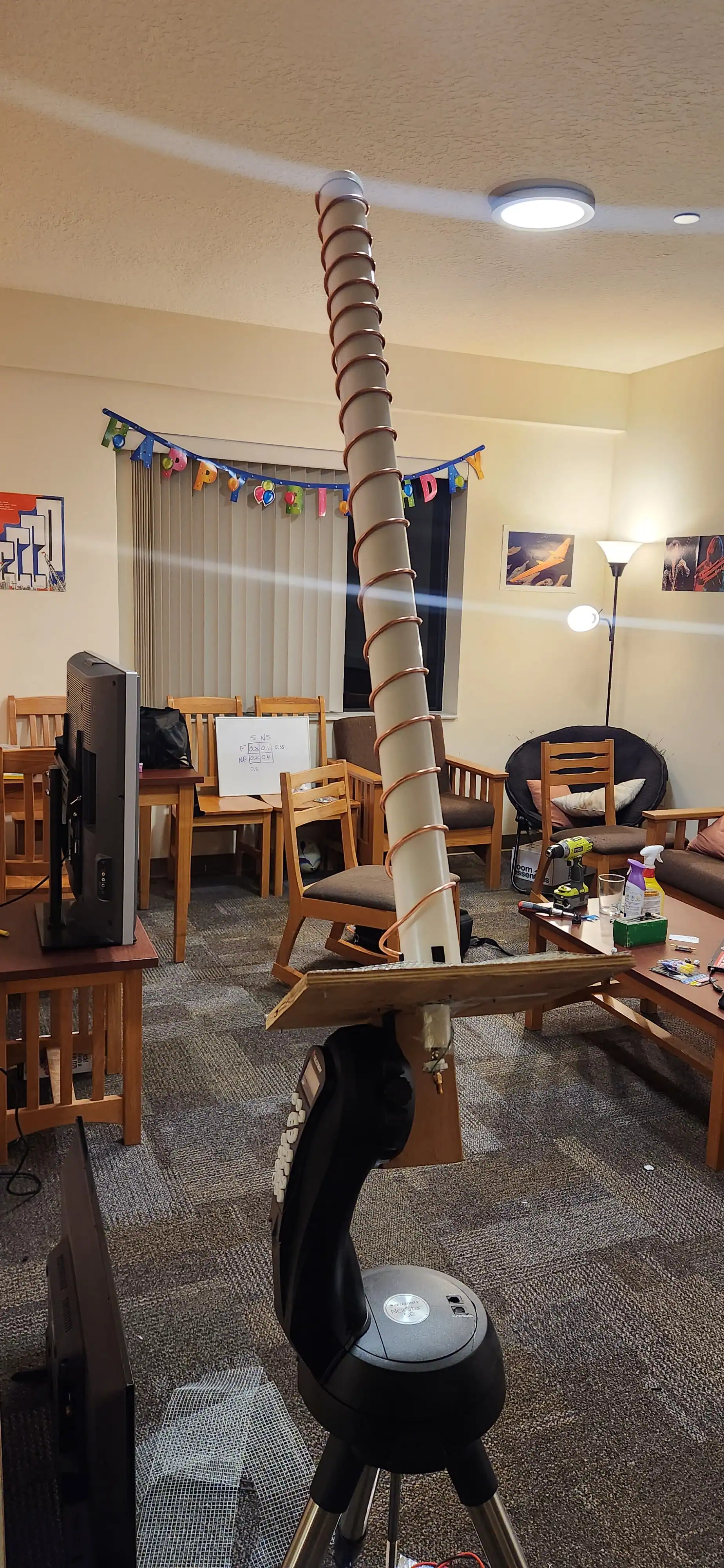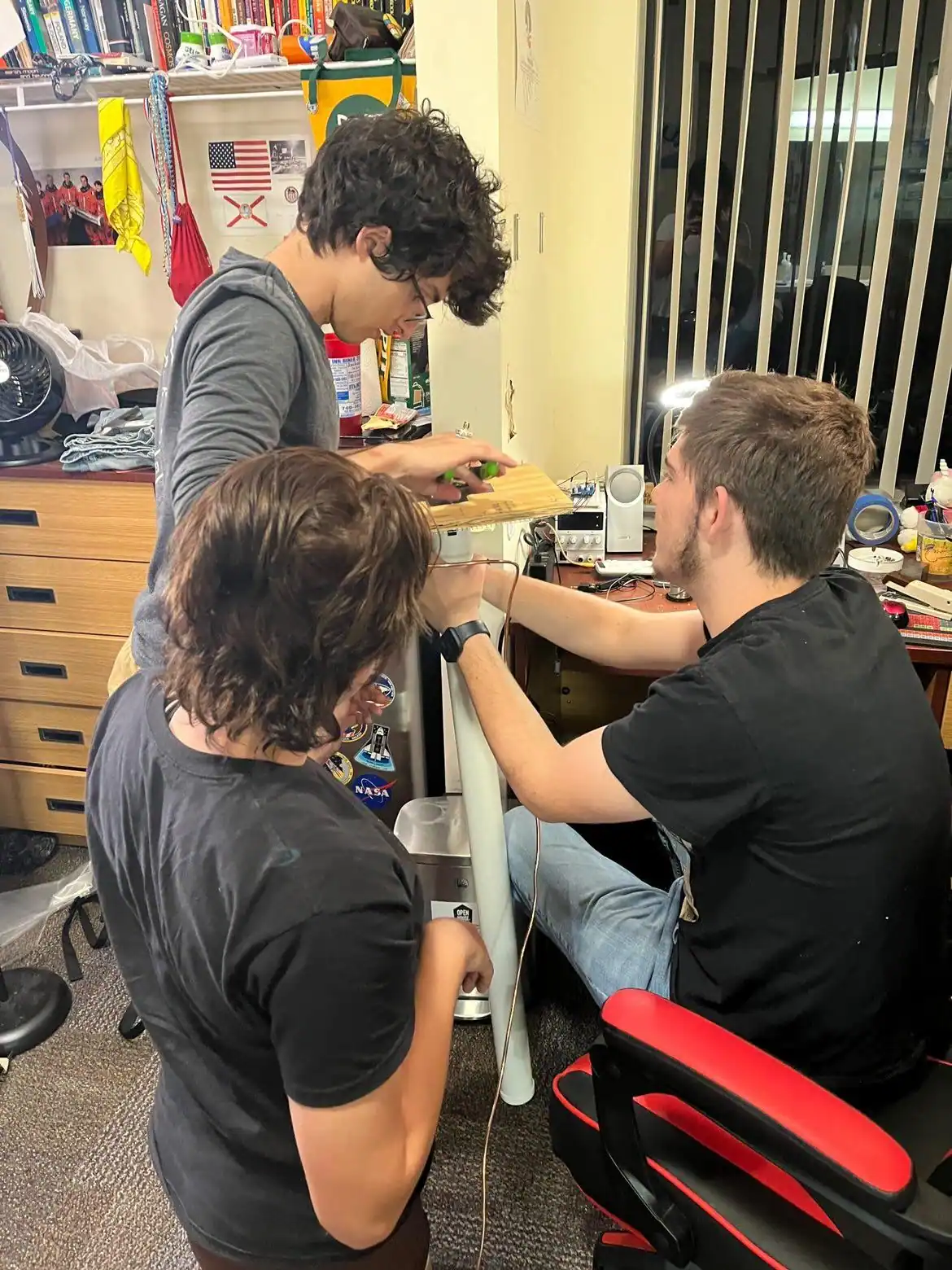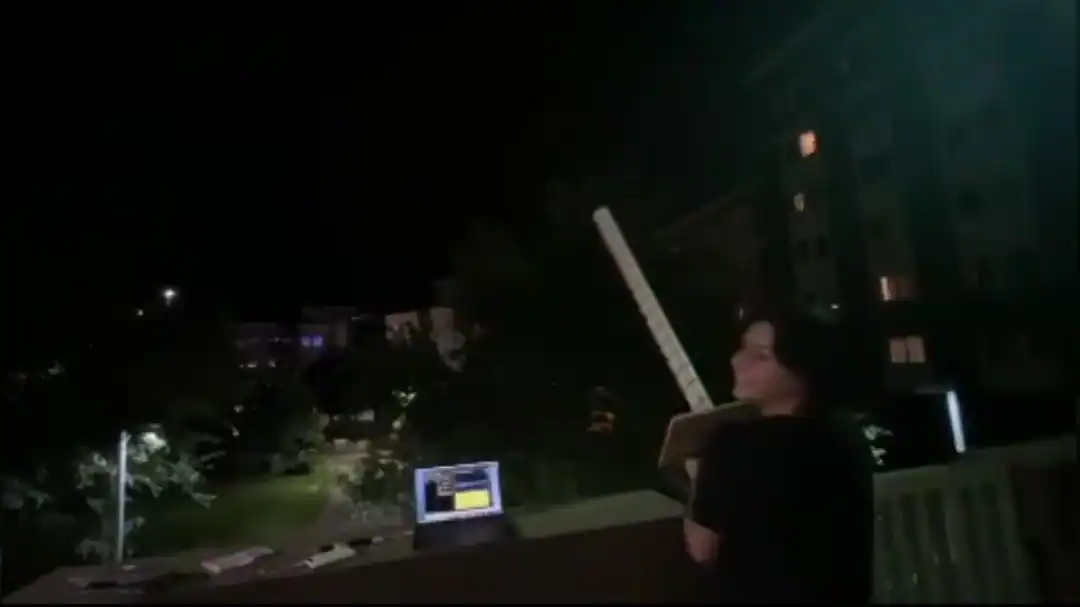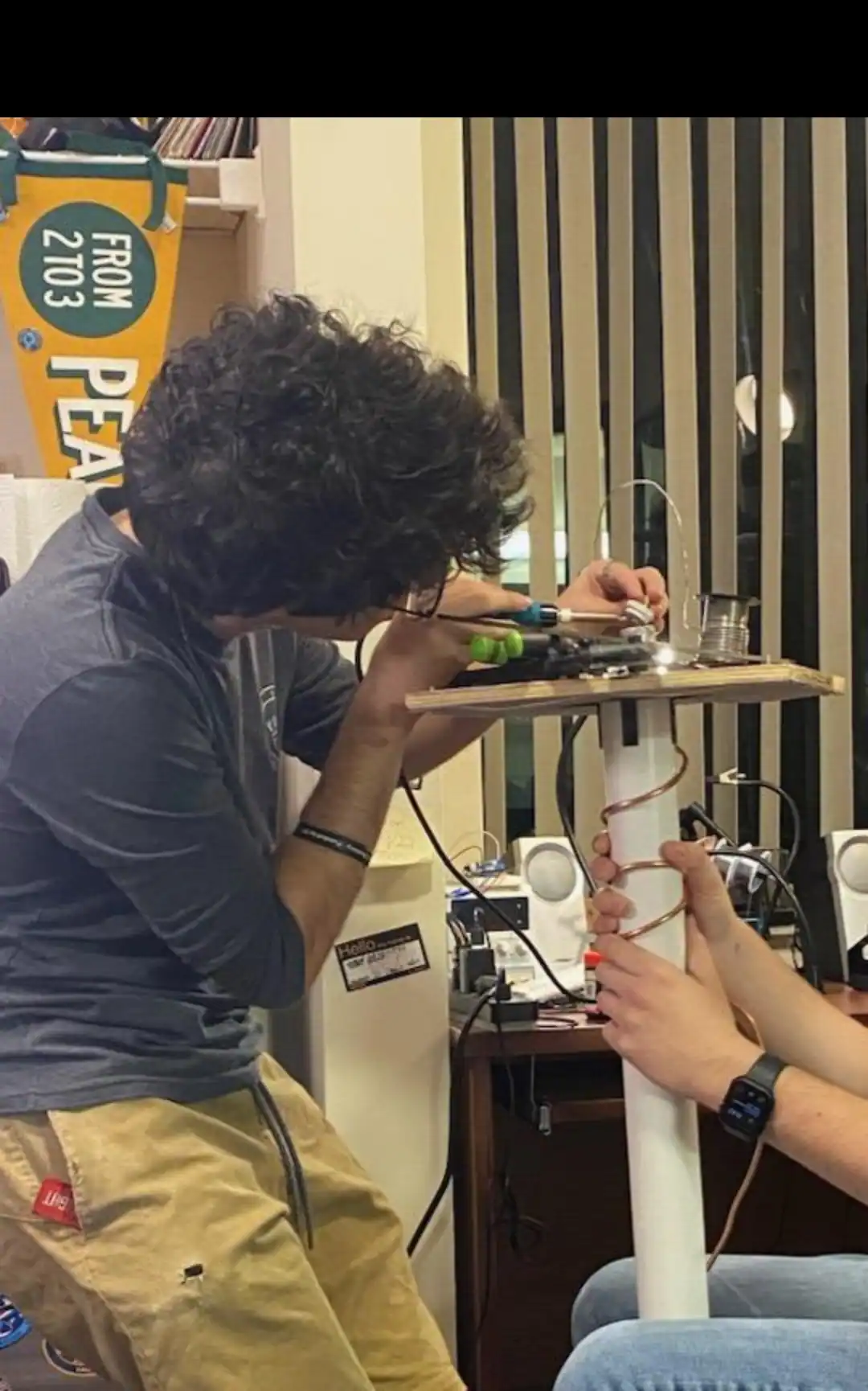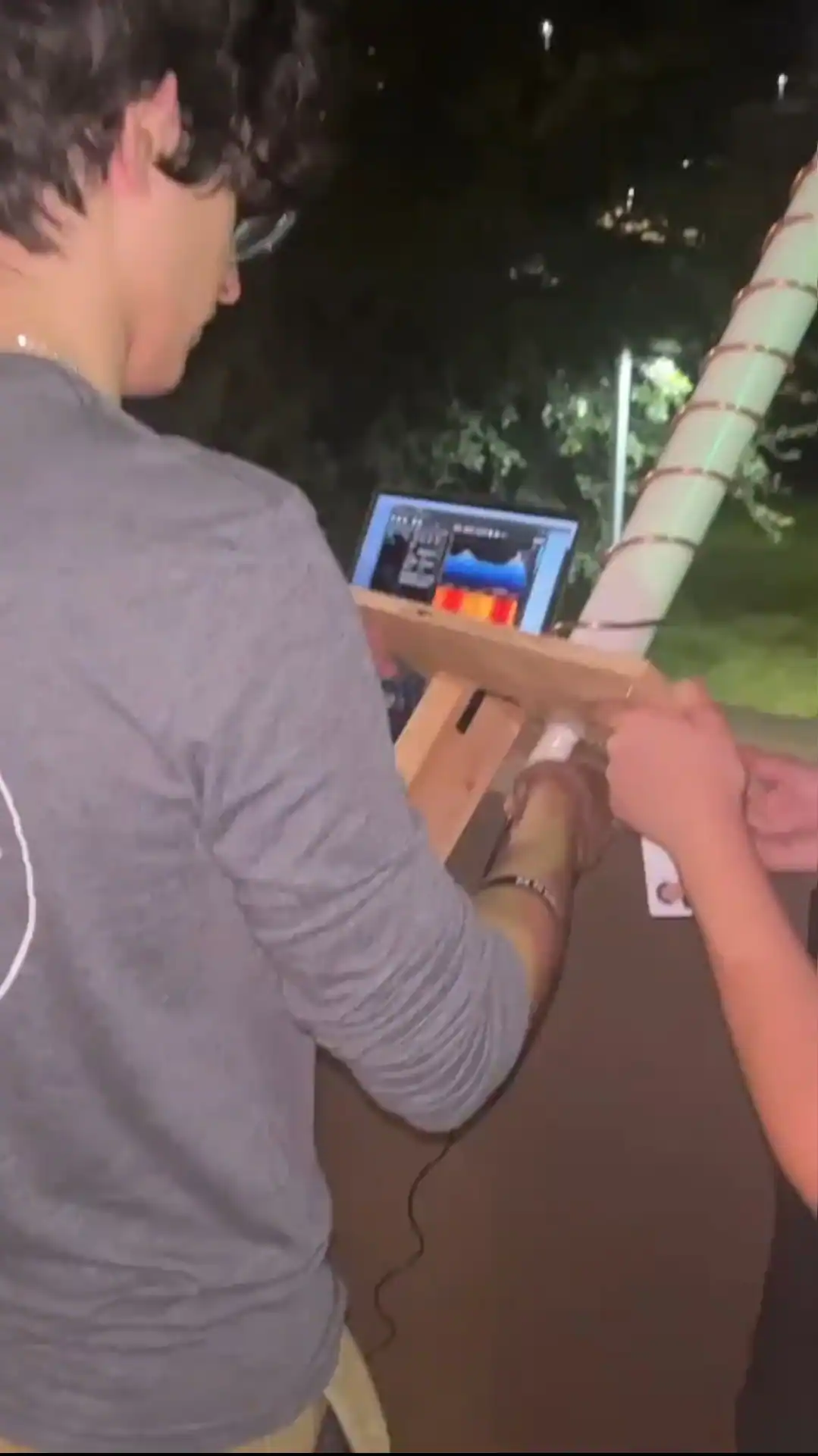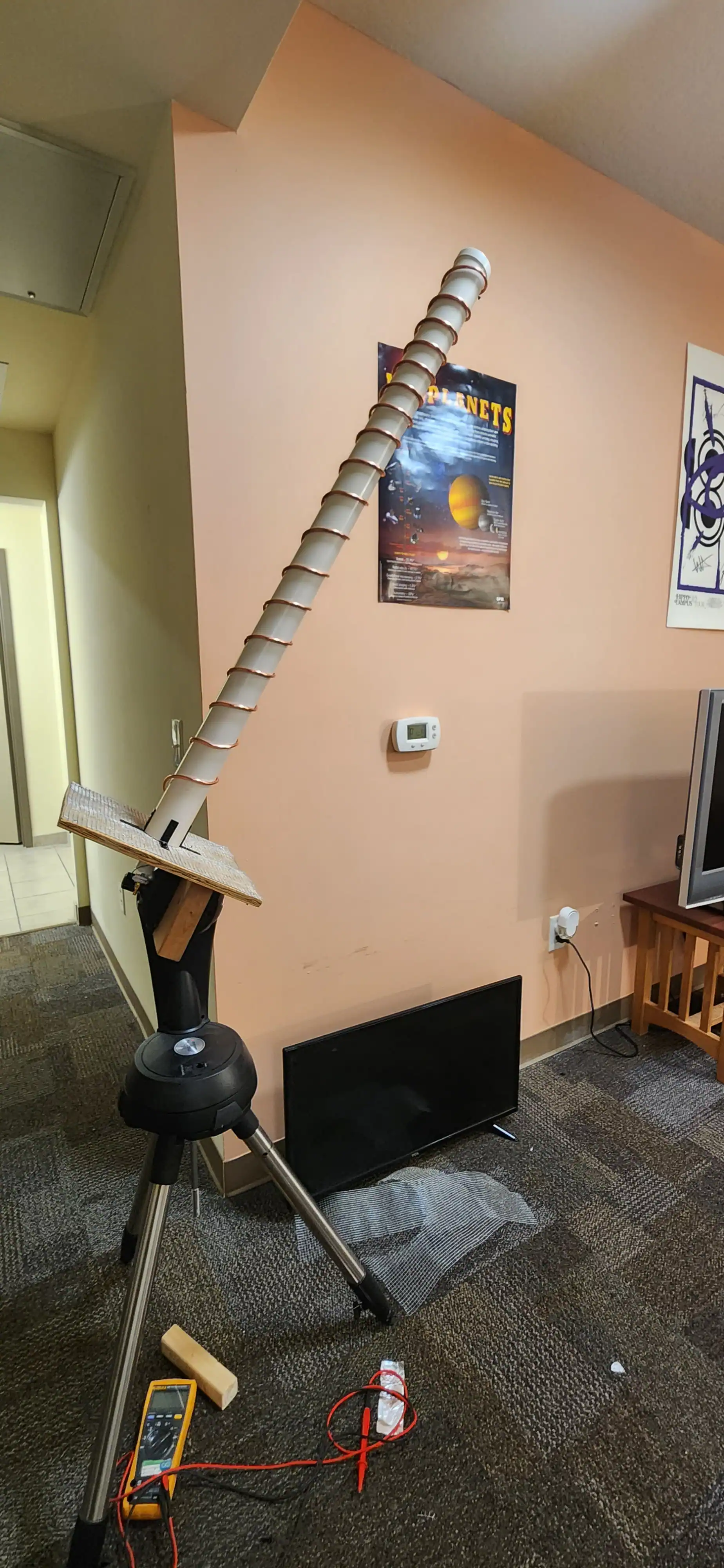Hydrogen Line Radio Telescope
Looking for a project to experiment beyond 1GHz, my friend Jacob and I found a pretty neat frequency on wikipedia, seeming to show the hyperfine transition of hydrogen from a spin opposite state. At 1.420GHz, the hydrogen created from the big bang that has been slowly reverting from spin opposite to spin same (electron/proton) and emiting radio photons at that frequency. By measuring the signal strength and doppler shift of any signal at that frequency, we can pick up both intensity and relative velocity to any target we point at.
We settled on a helical antenna for it’s strong directionality and ran the calculations through resources found on the Antenna Theory .com website. Ground plane and supporting base were fabricated from just plywood and chicken wire. Our copper helix was would around a 2.5" nom. 4.5ft long seciton of PVC pipe with 4AWG solid copper wire. Attaching an SMA connector and bodging a 50 ohm matching section we got pretty spot on to our target frequency after checking with my nanoVNA.
With a low noise amplifier (LNA) from nooelec on amazon, we got an amplification of around +20dB from noise with just the LNA and an RTLSDR. The antenna itself was calculated to have a gain of roughly 20.3dB after 20 turns of wire. Pretty neat how helical antennas at different constructions/frequencies can operate in a directional axial mode and a radial mode.
So far we’ve done some initial testing and managed to see a fleeting signal appear and dissapear after pointing it around the sky, but we need to add a counterweight and properly mount it on Jacob’s celestron telescope mount.
